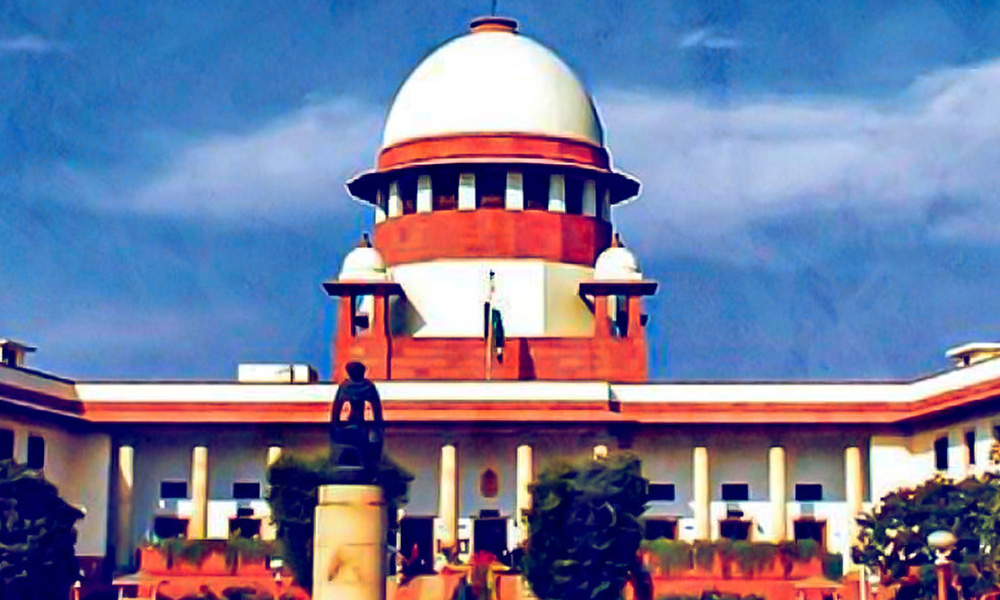
Image Credit: New Indian Express
Delhi Lashes Out At Haryana To Supreme Court Over 'Unimaginable' Ammonia Levels In Water
Writer: Kathakali Dutta
Kathakali Dutta is a second semester student of the Master of Communication and Journalism (Integrated) programme at the School of Mass Communication, KIIT Deemed University, Bhubaneswar.
Delhi, 16 April 2021 3:09 PM GMT | Updated 16 April 2021 4:55 PM GMT
Editor : Kishan Rao A S |
He believes in the philosophy of it is not a race to win but to create his own track. He has his opinions and realizes that every day is a learning.
Creatives : Vijay S Hegde
I am a creative, artistic and ambitious designer, with a talent for thinking outside the box and coming up with innovative ideas and designs. I graduated with a 1st Class honors degree in Video Editing from MAYA ACADEMY OF ADVANCED CINEMATICS
Vice-Chairman of DJB, Raghav Chadha accused Haryana of sending untreated water into the city.
The Delhi Jal Board (DJB) or the Delhi Water Board has filed a petition to the Supreme Court against the Haryana Government for disregarding the legal commitments surrounding the supply of water to the National Capital. The Delhi Jal Board further added that the Haryana Government is releasing untreated water to the national capital, which has "unimaginable" ammonia content in it. Such quantities of ammonia present in the water cannot be treated at any water plants. "Ammonia level has gone to an unimaginable level, and it is not possible to treat the water. Today we are about to shut down the whole of Delhi," said Vikas Singh, Senior Advocate representing the Delhi Jal Board, reported NDTV.
Ammonia In Water - The Numbers Behind It
The maximum acceptable limit of ammonia in drinking water, as per the Bureau of Indian Standards, is 0.5 ppm. Delhi's water treatment plants are equipped to treat water up to 0.9 PPM Ammonia; the water supplied by Haryana Government contains Ammonia level up to 7.36PPM. Ammonia in water above one ppm is toxic to fishes. Prolonged consumption of water with ammonia above 1PPM can cause damage to internal organs. At present, no specific technology is being used by Delhi; however, the new unit at Chandrawal water treatment plant by 2022, fitted with advanced technologies and filters, the DJB expects it can treat ammonia levels up to 4 ppm as reported by Indian Express.
'Oblivious to the water needs of Delhiites'
Delhi's primary source of water is the water of river Yamuna which contributes to forty per cent of Delhi's total daily water production and comes via Haryana. Therefore the Vice-Chairman of DJB, Raghav Chadha, accused Haryana of sending untreated water when the city is in dire need of water for hospital usage in the surge of Covid and for festival purposes like Navratri and Ramzan.
Raghav Chadha also accused the Haryana Government of not honoring the legal ties to supply water to Delhi. "Water supply in large part of Delhi will be affected because the Haryana government has chosen to remain oblivious to the water needs of Delhiites. It is not honoring the legal commitments to supply water to Delhi. This is criminal negligence on the part of the Haryana government. It is willfully violating Delhiites' right to life," said Chadha.
The conflict between Haryana & Delhi over the quality of water and sharing of water is a long-standing issue that has seen the courts intervene on multiple occasions. The presence of dying units and other water-polluting industries has also been a cause of concern. Haryana, an agriculture-dependent state, also uses water in large quantities and facing shortage themselves. A comprehensive solution based discussion between parties felicitated and mediated by Central Government and overseen by Judiciary can bring about a long term solution for Delhi & Haryana.
Also Read: COVID-19: Samples From Madhya Pradesh Showed 6% Double Mutation Virus And 5% UK Variant
 All section
All section














